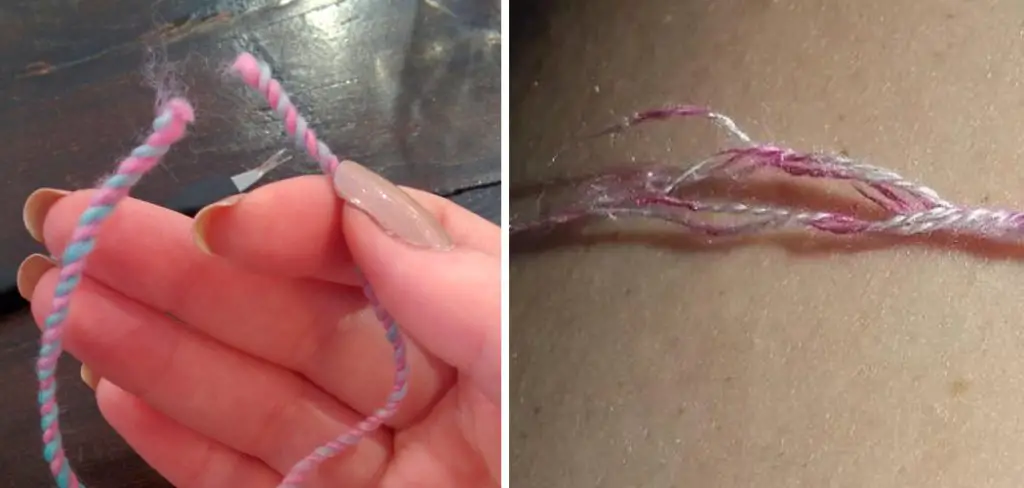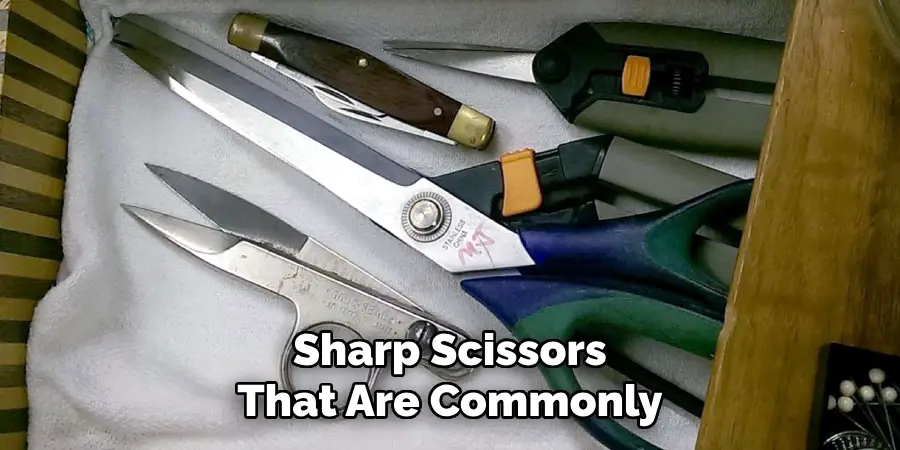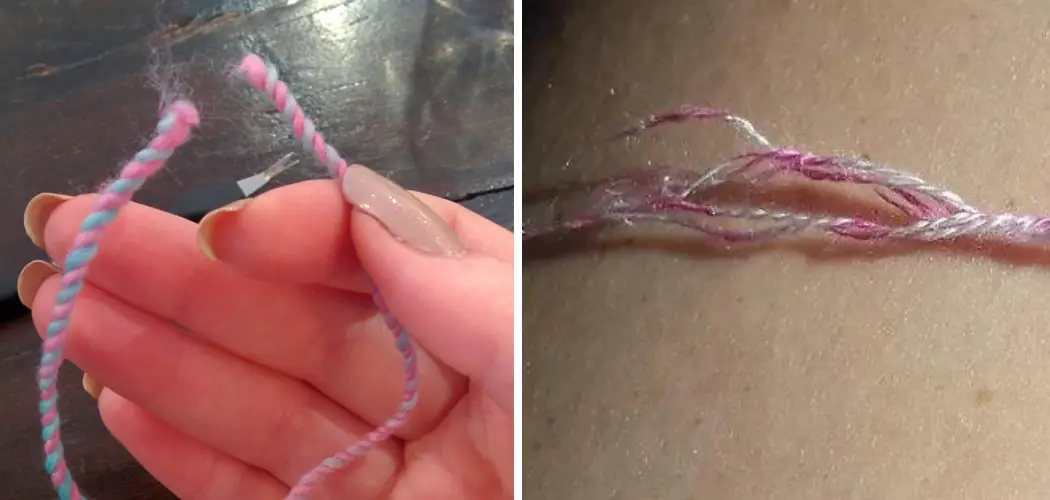In the world of crafting and knitting, finding yourself without a pair of scissors can be a common and somewhat frustrating predicament. However, resourcefulness often leads to ingenious solutions. Learning how to cut yarn without scissors can be a valuable skill for any yarn enthusiast or DIY enthusiast.

Whether you’re on-the-go, in the midst of a project, or simply misplaced your scissors, this guide will explore alternative methods and techniques for cleanly severing yarn.
From using household items to employing specific hand movements, we’ll delve into creative and effective ways to cut yarn without the conventional tool. So, if you’ve ever found yourself in need of a quick yarn trim without scissors at your disposal, read on to discover a variety of handy tricks that will keep your projects flowing smoothly even when your trusty scissors are nowhere to be found.
Situations where Scissors May Not Be Available
Sometimes, we may find ourselves in a situation where we need to cut yarn but don’t have scissors readily available. This can be frustrating especially if you’re in the middle of a project and do not want to take a break just to search for scissors.
Here are some situations where scissors may not be available:
- Traveling – If you’re traveling with your knitting or crocheting supplies, it may not be convenient to bring scissors with you. They may take up space in your luggage or carry-on and can even be confiscated by airport security.
- Outdoor activities – If you’re an avid knitter or crocheter who enjoys crafting while on a hike or picnic, carrying scissors may not be practical. You wouldn’t want to accidentally lose them in nature or have them get dirty.
- Emergency situations – In case of an emergency, you may not have access to scissors. It’s always a good idea to have some basic crafting skills and knowledge on how to cut yarn without scissors in case of such situations.
10 Methods How to Cut Yarn without Scissors
1. Use Your Hands
One of the easiest ways to cut yarn without scissors is to simply use your hands. Hold the yarn between your fingers and firmly pull apart. This method works best with thinner yarns, as thicker yarn may require more force to break.

2. Use a Knife
If you have a sharp knife nearby, you can use it to cut yarn in a pinch. Place the yarn on a flat surface and hold it taut with one hand while using the knife to make a clean cut through the fibers. This method works best with thicker yarns or those made of natural fibers like wool or cotton. Be careful when using a knife, as it can be dangerous and may result in injury if not handled properly.
3. Use Dental Floss
Dental floss can be used as a makeshift cutting tool for yarn. Simply wrap the floss tightly around the section of yarn you want to cut and pull quickly. The friction from the floss will cause the yarn to break cleanly. Just be sure to use a sturdy and thick dental floss, as thin ones may not provide enough friction to cut through thicker yarns.
4. Use a Key
In absence of scissors, you can use any sturdy object with a sharp edge, such as a key, to cut yarn. Place the key against the desired section of yarn and press down firmly until it breaks. Be careful not to cut yourself while using this method. It is also important to note that this method may cause the yarn to fray, so it is best used for projects where a clean edge is not crucial.
5. Use Nail Clippers
Nail clippers are small enough to carry around in your knitting or crochet bag and can easily be used to cut yarn on-the-go. Simply place the blade near where you want to make a cut and squeeze down firmly. This is a great option for those who travel often with their projects or for those who tend to misplace their scissors.
6. Use Thread Snips
Thread snips are small, sharp scissors that are commonly used by sewers and quilters. They are also handy for cutting yarn, especially when working with delicate fibers or intricate patterns.

Unlike regular scissors, thread snips have a spring-loaded mechanism that allows for quick and precise cutting without having to use your fingers to open the blades. This can be extremely useful when you are working on a project and need to cut small pieces of yarn quickly and accurately.
7. Use Tweezers
For thinner strands of yarn, tweezers can be used as an alternative cutting tool. Hold one end of the strand firmly between two tweezers and pull quickly in opposite directions to create a clean break. This method is especially useful when working with delicate fibers such as mohair or silk, as it avoids the risk of accidentally cutting through the yarn with scissors.
8. Use Wire Cutters
If you have wire cutters handy, they can also be used for cutting thicker or tougher types of yarn such as jute or rope. Simply place the yarn between the blades and squeeze down firmly to make a clean cut. This may dull your wire cutters over time, so it’s best to reserve them for yarn cutting only.
9. Use a Credit Card
A credit card can also be used as an impromptu cutting tool for yarn. Hold the yarn taut against the edge of the card and press down firmly with your thumb to create a clean break. This method works best with thinner yarns, as thicker yarns may require multiple passes to cut through completely.
10. Use Your Teeth
In emergency situations, you can use your teeth to cut yarn. However, this method is not recommended as it can damage your teeth or leave unwanted fuzz on the yarn. Use with caution and only as a last resort option. It is also important to clean your teeth thoroughly after using them to cut yarn.

Things to Consider When Cutting Yarn
When it comes to working with yarn, cutting it is often necessary to create the desired length for a project. While scissors may be the most common tool used for this task, there are times when they may not be available or practical to use. In these situations, knowing how to cut yarn without scissors can come in handy. However, before attempting to cut yarn without scissors, there are a few things to consider.
Durability of the Yarn
One important factor to keep in mind is the durability of the yarn being used. Some types of yarn may be more delicate and prone to breaking if not cut with sharp scissors. For example, mohair or fine silk yarns may require more care when cutting as they can easily fray or break if not cut cleanly. In these cases, it may be best to wait until scissors are available to ensure a clean and precise cut.
Yarn Thickness
Another consideration is the thickness of the yarn. Thicker yarns can be more difficult to cut without scissors, as they require more force and precision. It may also be harder to achieve a clean and even cut with thicker yarns. If possible, it may be best to use scissors for cutting thicker yarns to avoid any uneven or frayed edges.
Common Mistakes to Avoid When Cutting Yarn
Mistake #1: Not Leaving Enough Tail
One of the most common mistakes people make when cutting yarn is not leaving enough tail. The tail refers to the loose end of yarn that is left after cutting. This mistake can be frustrating as it often results in having to start over or having a shorter project than intended.
To avoid this, make sure to leave at least 6 inches of tail when cutting your yarn. This will give you enough room to weave in the ends and secure them properly.
Mistake #2: Cutting Too Close to the Project
Another mistake people make is cutting too close to their project. While it may seem like a small detail, this can actually cause your project to unravel or come apart easily. To prevent this, always leave a bit of space between your project and where you cut the yarn.

Mistake #3: Using Dull Scissors
Cutting yarn with dull scissors can be frustrating and can also result in uneven cuts. It’s important to have sharp scissors specifically for cutting yarn to ensure clean and precise cuts. If you find yourself struggling to cut through your yarn, it may be time to invest in a new pair of scissors.
Conclusion
In conclusion, learning how to cut yarn without scissors can be a game-changer for any knitter or crocheter. Not only does it save time and effort, but it also allows for a more seamless and uninterrupted crafting experience. By using alternative methods such as using your hands or teeth, you can expand your skills and become a more versatile crafter.
And let’s not forget the environmental benefits of reducing our dependence on single-use tools like scissors. So next time you find yourself in a pinch without scissors, remember these helpful techniques and continue your crafting journey with confidence and creativity. Who knows, you may even discover new ways to utilize everyday objects for cutting yarn!
Expertise:
Crafting expert with a focus on innovative techniques and diverse materials.
Specialization:
- Textile arts (weaving, embroidery, and fabric dyeing)
- Woodworking and furniture design
- Mixed media and upcycling projects
Recognition:
- Featured in local art exhibits showcasing innovative craft projects
- Collaborated with community organizations to promote crafting workshops
- Received accolades for contributions to sustainable crafting initiatives
Mission:
- To inspire and empower crafters of all levels to discover their creative potential
- Encourages experimentation and self-expression through hands-on projects

